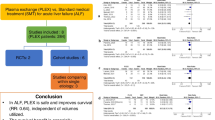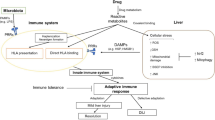Abstract
In living donor liver transplantation, graft size is very important, and various studies have been conducted regarding these problems in small-for-size (SFS) grafts. The administration of immunosuppressants for SFS graft, in which the functional liver mass is small and necessary for excessive liver regeneration, has not been reported so far. The aims of this study were to investigate the optimal administration of cyclosporine (CyA) and characteristics of metabolism of CyA, according to liver volume. Seven-week-old male Wister rats were randomly divided into four groups: two CyA-administered groups (CyA groups), 70% and 90% hepatectomy (Hx); and two control groups, 70% and 90% Hx. The 70% Hx and 90% Hx were used as the surrogate model of SFS for 30% and 10% graft models. In CyA groups, CyA (5 mg/kg/day) was given for 3 days before Hx and after surgery until sacrifice. Animals were sacrificed at 0, 12, 24, 48, and 72 hr after Hx. The blood concentration of CyA and the expression of the CYP3A2 gene were measured at each point in CyA groups, and liver regeneration was evaluated by measuring the ratio of remnant liver weight to body weight in each group. Regarding the blood concentration of CyA, no difference was recognized between 30% and 10% graft models except for 72 hr after Hx. As for liver regeneration, no significant difference was recognized. Regarding the expression of CYP3A2, no change was noted in the 30% graft model; on the other hand, CYP3A2 expression was reduced. Significant differences between the 30% and the 10% graft model were observed 48 and 72 hr after Hx. The blood concentration of CyA was not dependent on the volume of the liver graft.












Similar content being viewed by others
References
Kiuch T, Kawasaki M, Uryuhara K, Inoue Y, Uemoto S, Asonuma K, Egawa H, Fujita S, Hayashi M, Tanaka K (1999) Impact of graft size mismatching on graft prognosis in liver transplantation from living donors. Transplantation 67:321–327
Sugawara Y, Makuuchi M, Takayama T, Imamura H, Dowaki S, Mizuta K, Kawarasaki H, Hashizume K (2001) Small-for-size grafts in living related liver transplantation. J Am Coll Surg 192(4):510–513
Shimada M, Ijichi H, Yonemura Y, Harada N, Shiotani S, Ninomiya M, Yoshizumi T, Soejima Y, Suehiro T, Maehara Y (2004) Is graft size a major risk factor in living-donor adult liver transplantation? Transpl Int 17(6):310–316
Grant D, Kneteman N, Tchervenkov J, Roy A, Murphy G, Tan A, Hendricks L, Guilbault N, Levy G (1999) Peak cyclospoline levels (Cmax) correlate with freedom from liver graft rejection: result of a prospective, randomized comparison of neural and sandimmune for liver transplantation (NOF-8). Transplantation 67(8):1133–1137
Fukudo M, Yano I, Masuda S, Katura T, Ogura Y, Oike F, Takada Y, Tanaka K, Inui K (2006) Cyclosporine exposure and calcineurin phosphatase activity in living-donor liver transplantation patient: twice daily vs. once daily dosing. Liver Transpl 12(2):292–300
Fukudo M, Yano I, Masuda S, Fukatsu S, Katura T, Ogura Y, Oike F, Takada Y, Tanaka K, Inui K (2005) Pharmacodynamic analysis of tacrolimus and cyclosporine in living-donor liver transplantation patient. Clin Pharmacol Ther 78(2):168–181
Molpeceres J, Chacon M, Guzman M, Aberturas MR, Berges L (2000) Dependency of cyclosporine tissue distribution and metabolism on the age and gender of rat after a single intravenous dose. Int J Pharm 197(1–2):129–141
Yokogawa K, Shimada T, Higashi Y, Itoh Y, Masue T, Ishizaki J, Asahi M, Miyamoto K (2002) Modulation of mdr1a and CYP3A gene expression in the intestine and liver as possible cause of changes in the cyclosporine A disposition kinetics by dexamethasone. Biochem Pharmacol 63(4):777–783
Uwe C, Karl-Friendrich S (1995) Alternative cyclosporine metabolic pathways and toxicity. Clin Biochem 28:547–559
Tomlinson ES, JMaggs JL, Park BK, Back DJ (1997) Dexamethasone metabolism in vitro: species difference. J Steroid Biochem Mol Biol 62:345–352
Dahmen U, Gu YL, Shen K, Dirsch O, Li J, Fan LM, Broelsch CE (2002) Onset of liver regeneration after subtotal resection is inhibited by the use of new immunosuppressive drugs. Transplant Proc 34(6):2312–2313
Morii Y, Kawano K, Kim YI, Aramaki M, Yoshida T, Kitano S (1999) Augmentative effect of cyclosporine A on rat liver regeneration: influence on hepatocyte growth factor and transforming growth factor-β1. Eur Surg Res 31(5):399–405
Higgins GM, Anderson RM (1931) Experimental pathology of the liver. Arch Pathol 12:186–202
Carson E, Rioux N, Nicolas O, Lebel-Talbot H, Bettina A (2005) Hamelin: quantification of expression and inducibility of 12 rat cytochrome P450 isoforms by quantitative RT-RCR. J Biochem Mol Toxicol 19(6):368–378
Staatz CE, Tett SE (2004) Clinical pharmacokinetics and pharmacodynamics of tacrolimus in solid organ transplantation. Clin Pharmacokinet 43:623–653
Ptachcinski RJ, Venkataramanan R, Burckart GJ (1986) Clinical pharmacokinetics of cyclosporine. Clin Pharmacokinet 11:107–132
Jin M, Shimada T, Shintani M, Yokogawa K, Nomura M, Miyamoto K (2005) Long-term levotyroxine treatment decreases the oral bioavailability of cyclosporine A by inducing P-glycoprotein in small intestine. Drug Metab Pharmacokinet 20(5):324–330
Acknowledgments
This study was supported by Grants-in-Aid for Scientific Research (Scientific Research [B] No. 17390370 and Scientific Research: Exploratory Research No. 17659390). The authors are very grateful to Yuji Okumura, Institute for Enzyme Research, Division of Enzyme Chemistry, University of Tokushima, for critical comments regarding the RT-PCR analysis of CYP3A2 in the liver.
Author information
Authors and Affiliations
Corresponding author
Rights and permissions
About this article
Cite this article
Shinohara, H., Shimada, M., Ogasawara, T. et al. Pharmacokinetics of Cyclosporine A After Massive Hepatectomy: A Hint for Small-for-Size Graft in Living Donor Liver Transplantation. Dig Dis Sci 52, 2490–2496 (2007). https://doi.org/10.1007/s10620-007-9744-1
Received:
Accepted:
Published:
Issue Date:
DOI: https://doi.org/10.1007/s10620-007-9744-1




